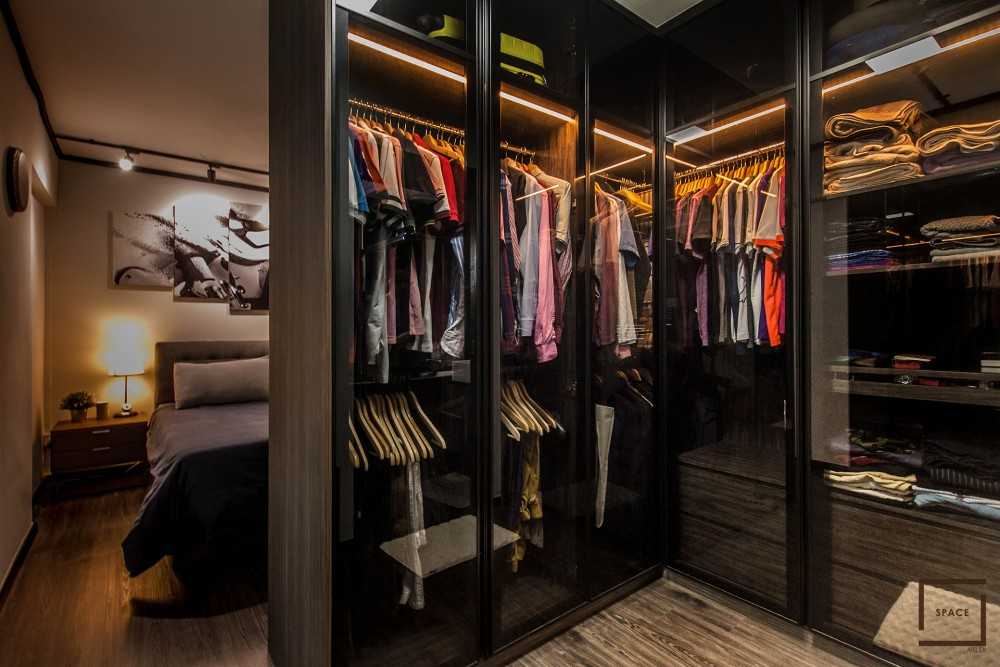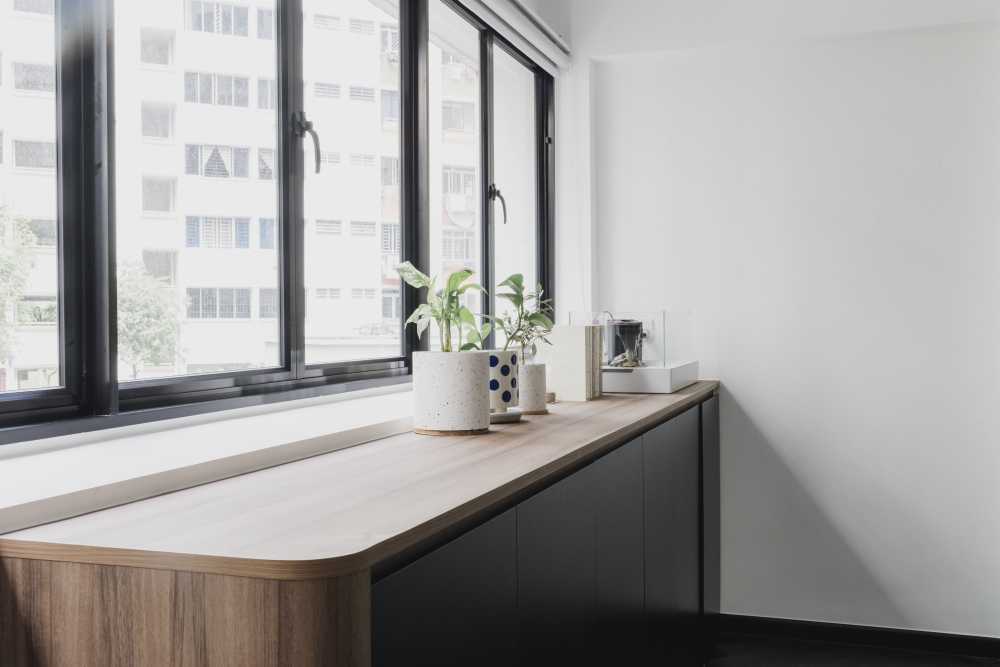The Ultimate Guide to Renovating In the Wabi-Sabi Style
Wabi-Sabi is a Japanese aesthetic rooted in the beauty of imperfection, impermanence, and simplicity. It embraces natural elements, aged materials, and the charm of things that are slightly flawed yet full of character. Originating from Zen Buddhism, Wabi-Sabi teaches us to find peace and beauty in the transience of life.
When applied to home design, Wabi-Sabi goes beyond aesthetics, creating a sense of mindfulness and harmony in everyday living.
In this article, we walk you through how to renovate your home in the Wabi-Sabi style, exploring its core principles and sharing practical design tips that you can use in Singapore’s context.
What Wabi-Sabi Is Not
Before we talk about how to design your home in the Wabi-Sabi style, let’s first address what Wabi-Sabi is not.
Wabi-Sabi is often misunderstood as merely a design trend focused on incorporating irregular shapes, distressed finishes, or natural textures. While these elements are associated with the style, they do not define it.
At its core, Wabi-Sabi is not about deliberately curating imperfections to achieve a specific look. In fact, the very act of designing a home to fit a “Wabi-Sabi aesthetic” can contradict its philosophy. Wabi-Sabi is about authenticity, humility, and embracing what naturally exists without forcing it into a specific mold.
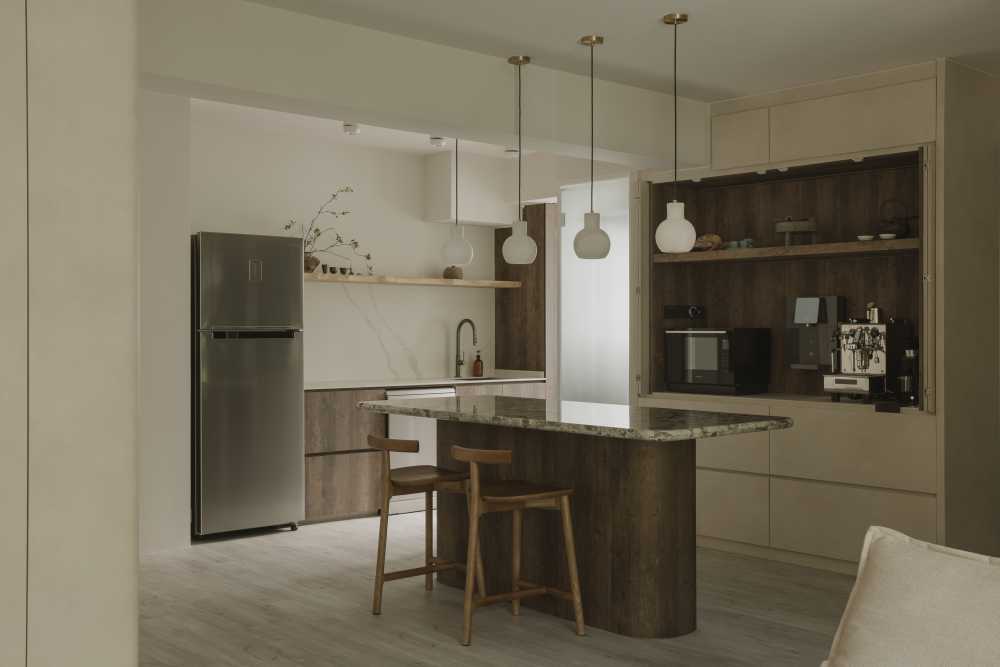

9 Joo Seng Road ($90,000) by The Interior Lab Pte Ltd
So, if you’re looking to bring Wabi-Sabi into your home, it’s not as simple as buying a few irregularly shaped lamps or applying limewash to your walls for a “raw” or “organic” look.
Instead, you should embrace what you have and work with it. For example, say you’re in the midst of hacking the walls in your resale unit to create an open kitchen.
If your contractor removes a wall and you discover a beam or structural element that speaks to you, consider keeping it as a feature in your home. Rather than concealing it or covering it up, allow it to become a key part of your design, adding character and a sense of history to your space.
Likewise, if you find that the walls in your space have natural cracks or imperfections, instead of hiding them with drywall, leave them exposed. You can even enhance them by applying a textured finish or using a light wash to give the walls a soft, organic look.
What if you’re in a BTO flat that’s brand new, with no history or pre-existing character? You can still embrace Wabi-Sabi by focusing on creating an atmosphere that celebrates imperfection, natural materials, and the passage of time.
For example, you can introduce raw materials like natural wood, stone, linen, or cotton that will develop a unique character as they age. Choose unpolished wood for furniture, natural stone countertops, and linen or cotton curtains that soften over time. These materials will gain their own “patina,” embodying the essence of Wabi-Sabi.
Core Principles of Wabi-Sabi Design
By focusing on a few key principles, you can introduce Wabi-Sabi into your home and create an atmosphere of calm and connection with the natural world. Here are the core principles that define this unique design approach:
Simplicity
At the heart of Wabi-Sabi is simplicity, which encourages the use of minimalism and functional design. A clutter-free environment creates a sense of peace, allowing each item to shine without distraction.
By keeping only what is essential, you open up space for reflection and mindfulness. Opt for simple, clean lines in furniture and decor, focusing on functionality and quality rather than unnecessary ornamentation. This approach not only calms the mind but also highlights the inherent beauty of each object you choose to incorporate into your space.
Natural Elements
Wabi-Sabi deeply connects to nature, and its designs are often built around raw, unrefined materials. Elements like wood, stone, clay, and linen bring an organic, tactile quality to the space. These materials’ natural textures, with their knots in wood, rough edges on pottery, and weathered stone, evoke a sense of authenticity and timelessness.
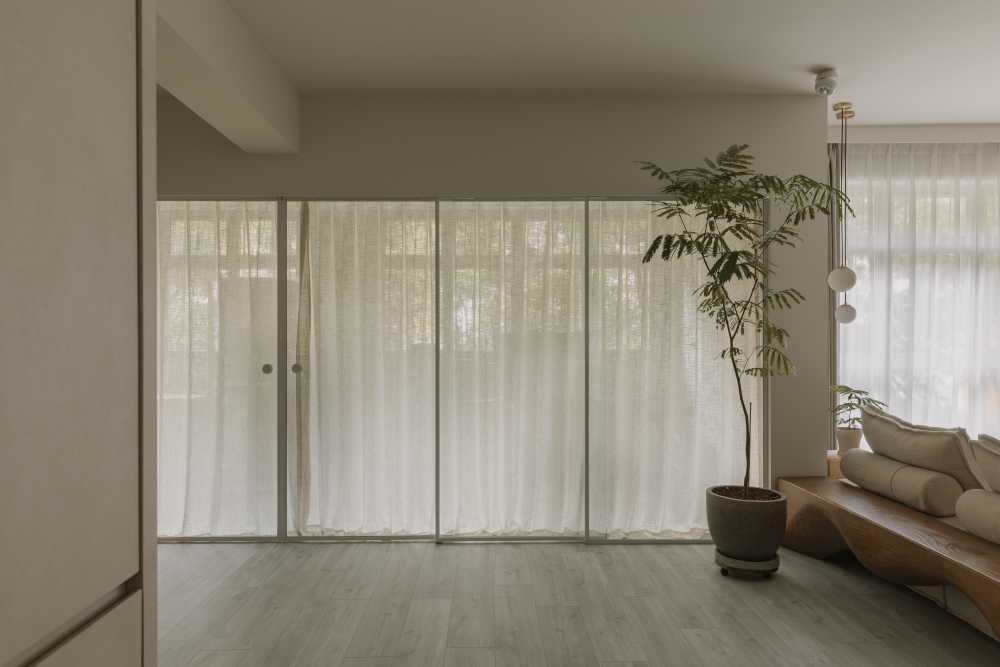

9 Joo Seng Road ($90,000) by The Interior Lab Pte Ltd
By embracing natural elements, your home becomes a reflection of the environment around you, fostering a sense of groundedness and tranquility. It’s about allowing nature’s beauty to remain unpolished and unaltered, which adds depth and richness to your space.
Embracing Imperfections
Wabi-Sabi finds beauty in imperfections. Cracks in a handmade bowl, weathered wood on furniture, or the soft fade of fabric over time all tell a unique story, adding a layer of history to your home. These imperfections aren’t flaws; rather, they signify a journey, adding depth, texture, and character to your space.
In Wabi-Sabi design, the wear and tear of everyday life is celebrated, and each mark or scratch becomes a cherished part of the item’s identity. Instead of striving for perfection, Wabi-Sabi encourages you to embrace the beauty that comes with age, use, and time.
Subdued Colour Palette
Wabi-Sabi spaces are typically defined by earthy, muted colours like soft whites, greys, browns, and muted greens. These colours reflect the natural world and promote a calm, soothing atmosphere.
Rather than bold, flashy colours, the subdued palette allows for a more harmonious, peaceful environment that aligns with the Wabi-Sabi principle of impermanence. These colours help to create a space where the focus shifts to the materials and textures within, fostering a sense of tranquility and connection to nature.
Planning Your Wabi-Sabi Renovation
When it comes to designing a Wabi-Sabi-inspired space, the process is about embracing simplicity, imperfection, and a deep connection to nature. Here are several tips to guide you through your renovation, ensuring that your space aligns with Wabi-Sabi principles:
Assess Your Space
Start by decluttering and simplifying your home. Clear out excess items and focus on the essentials. This step will help you identify areas that can be stripped back, maximizing natural light and creating a more open, serene environment.
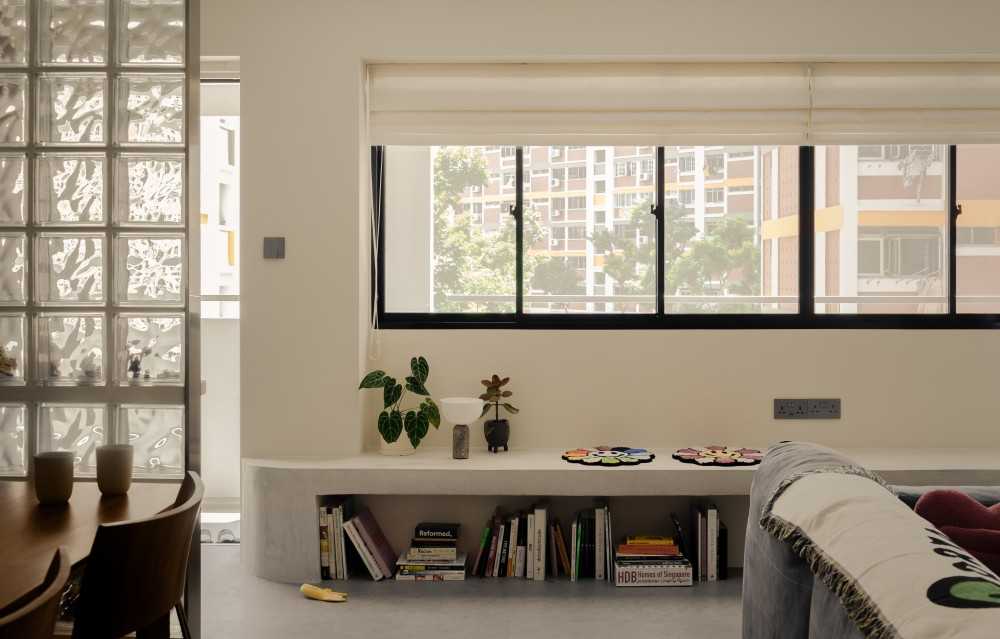

272 Bishan Street 24 ($64,575) by MET Interior
Look for opportunities to create spaces that feel light and calm, allowing each element in the room to stand out on its own. This could mean removing unnecessary furniture or rethinking the layout to allow for more breathing room.
Choose Authentic Materials
Wabi-Sabi celebrates natural, sustainable materials that age gracefully and develop character over time. Reclaimed wood, handmade ceramics, and natural stone are excellent choices. These materials not only enhance the aesthetic of the space but also contribute to a timeless, organic feel.
However, given that Singapore has a humid climate, it’s important to balance the beauty of these materials with practicality. Humidity can affect materials like wood and stone, potentially causing them to warp, swell, or develop mold.
To maintain the integrity of your Wabi-Sabi-inspired space, consider materials that are more resistant to moisture, such as treated wood. On top of that, opt for hardwoods like teak, mahogany, or meranti, which are well-suited for Singapore’s humid climate due to their natural resistance to moisture, rot, and termites.
Finally, you can also introduce moisture-absorbing elements like indoor plants, dehumidifiers, or air circulators to create a more stable environment that preserves the longevity of these organic materials without compromising their natural aesthetic.
Create a Balanced Layout
Wabi-Sabi thrives on harmony and balance, so it’s important to create a layout that feels fluid and uncontrived. Avoid overfilling your space with too many elements—each piece should have room to breathe.
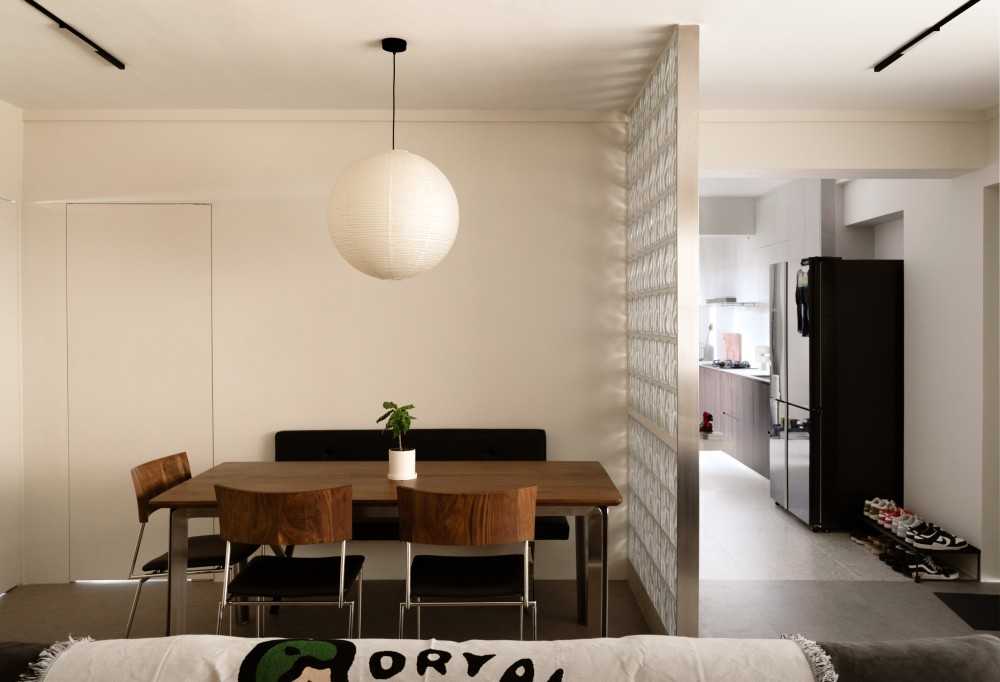

272 Bishan Street 24 ($64,575) by MET Interior
Consider open shelving or minimalist furniture that doesn’t overwhelm the space, and use subtle symmetry or asymmetry to keep things feeling natural. The layout should feel effortless, as though it has evolved over time rather than being overly designed.
Incorporate Imperfect, Handcrafted Details
Handcrafted pieces or items with visible flaws are central to Wabi-Sabi. Look for artisanal items like handmade pottery, imperfectly shaped vases, or furniture with visible signs of craftsmanship. These pieces help convey the beauty of imperfection and tell a story.
Remember, it’s perfectly okay to take your time and slowly fill up your shelves. Wabi-Sabi is about embracing the journey, not rushing to achieve a perfectly “styled” look from day one. Your home should evolve naturally over time, with each piece finding its place as it becomes part of the story you’re telling.
Rather than curating the ideal decor or buying new pieces to fill your shelves, focus on incorporating items you’ve gathered over the years—souvenirs from your travels, gifts from friends, or pieces passed down from family. These items, rich in history and personal significance, add depth and authenticity to your space, contributing to the organic, lived-in feel of your home.
Room-by-Room Design Ideas For The Wabi-Sabi Aesthetic
The Wabi-Sabi aesthetic brings a sense of tranquility and authenticity to every room. By embracing simplicity, natural materials, and the beauty of imperfection, you can create a space that feels both timeless and deeply personal. Here are some room-by-room design ideas to help you infuse Wabi-Sabi into your home:
Living Room
In the living room, the key to capturing the Wabi-Sabi essence lies in creating a calm, inviting space that emphasizes comfort and authenticity.
Incorporate low-profile seating with soft, natural fabrics such as linen, cotton, or wool, which offer a tactile quality that invites relaxation. These materials, with their organic textures, age beautifully, becoming more comfortable and visually appealing over time.
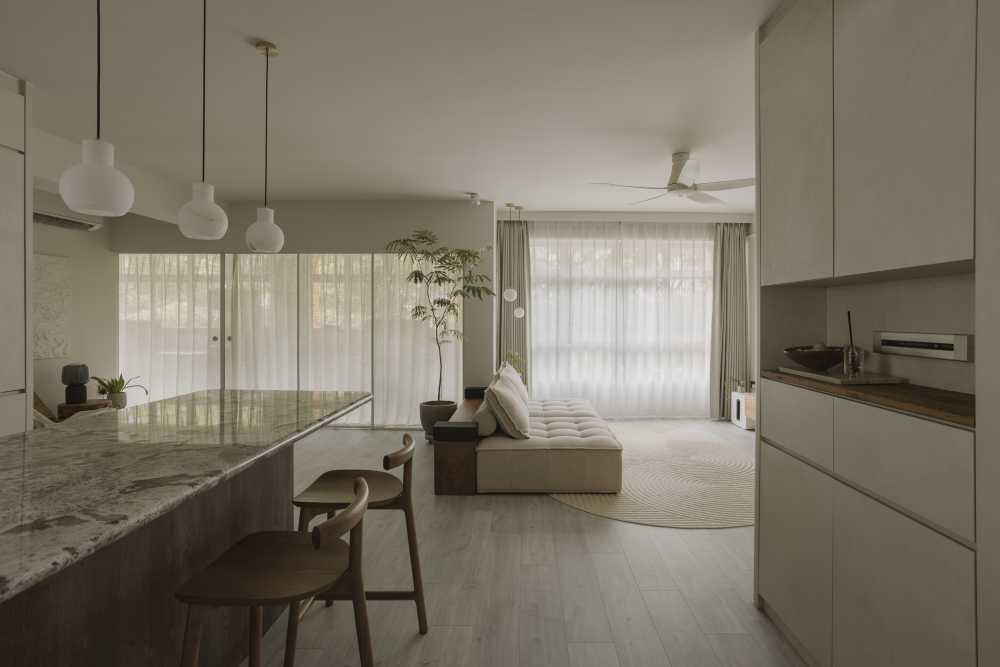

9 Joo Seng Road ($90,000) by The Interior Lab Pte Ltd
Keep the decor simple and functional, focusing on items that are meaningful rather than just decorative. Handmade ceramics, dried flowers from your wedding or anniversary, or family heirlooms can all add warmth and character to the space.
Each item should tell a story, and its imperfections—such as slight cracks in a handmade vase or a faded pattern on an old rug—enhance its uniqueness and deepen the room’s overall sense of authenticity. These natural flaws should not be hidden but celebrated, contributing to a space that feels lived-in and loved.
Kitchen
The kitchen is the heart of the home, and can beautifully embody Wabi-Sabi through its balance of practicality and beauty.
Start with open shelving that displays your most used yet beautiful dishware—think hand-thrown pottery, mismatched ceramic mugs, or wooden cutting boards that show the marks of time. This arrangement allows the beauty of everyday items to shine, while also serving a functional purpose.
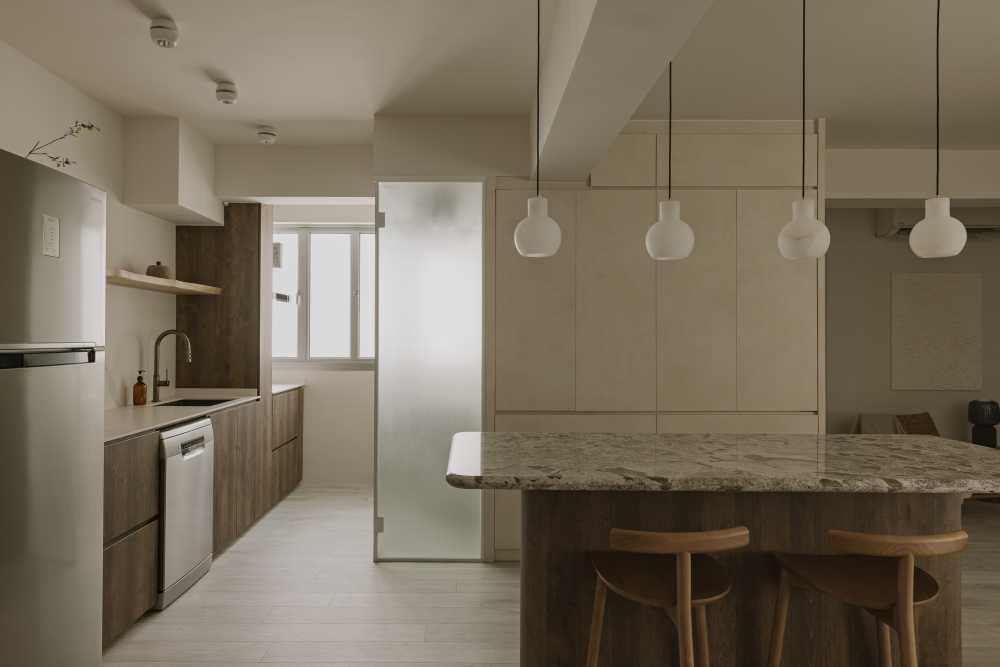

9 Joo Seng Road ($90,000) by The Interior Lab Pte Ltd
For the countertops, opt for materials like wood or stone that evolve over time, gaining character as they age. Aged metal fixtures, such as brass handles or vintage-style faucets, not only complement the natural materials but also bring an added layer of texture and history.
Wabi-Sabi doesn’t require pristine countertops or perfectly matched plates—instead, it celebrates the imperfections that come with daily use, such as the gentle patina on a well-worn knife or the subtle scratches on a wooden countertop. These elements not only make the space feel more personal but also create a kitchen that feels grounded in its history, offering both beauty and functionality.
Bedroom
The bedroom, a sanctuary for rest and rejuvenation, benefits from a minimalist Wabi-Sabi approach that emphasizes simplicity and comfort.
Opt for furnishings with clean lines and natural materials—solid wood beds with visible grain patterns, a linen duvet cover, or a stone vase for flowers. Layer textiles like soft cotton throws or woven blankets to add warmth and texture, creating a restful and organic atmosphere.
Subtle imperfections, such as a handwoven rug with slight irregularities or a reclaimed wood headboard with natural knots, add depth to the space, transforming it into a calming retreat that feels intimate and authentic.
In a Wabi-Sabi bedroom, less is more—focus on high-quality items that invite restfulness without overwhelming the senses. The goal is to create an environment that creates relaxation, where each piece feels as if it belongs, without excess or clutter.
Bathroom
The bathroom is a place for personal reflection and care, and it can perfectly embody Wabi-Sabi through its natural materials and subtle imperfections.
Choose stone sinks or basins made from clay, terracotta, or river rock that retain their raw, unpolished look. These natural materials add texture and a sense of grounding to the space, evoking the calming influence of nature.
For tiles, consider natural stone or handmade ceramic tiles with slight colour variations or irregular shapes—imperfections in these materials enhance their beauty over time. An uneven mirror or a hand-thrown ceramic soap dish might not be “perfect,” but they will bring warmth and charm to the space, creating an atmosphere of tranquility.
Study
The study is where reflection, focus, and creativity come to life, making it an ideal space to fully embrace the Wabi-Sabi aesthetic.
Choose furniture that speaks to simplicity and functionality, such as a wooden desk made from reclaimed or salvaged materials that retain the natural imperfections of the wood’s texture and grain. A desk with visible marks or slight discolouration tells a story and adds character, making it feel truly unique.
A minimalist approach in the study is important—keep the space uncluttered and let the materials themselves provide the beauty. Natural wood shelving, simple lamps, or a leather chair with a worn patina can help foster a calming atmosphere conducive to work or study.
Add a few personal touches, such as a favourite book or a piece of art that resonates with you, but avoid over-decorating. Wabi-Sabi encourages space for creativity and focus, where imperfections are seen as natural and integral parts of the room’s personality. The overall feeling should be one of quiet comfort, where each item contributes to a purposeful, serene environment.
Bringing Wabi-Sabi into a Home with Kids
Can you design a Wabi-Sabi home if you have kids? Yes, but doing this requires a thoughtful balance between the philosophy’s natural, unrefined aesthetics and the practical needs of a family environment.
Balancing Natural Aesthetics with Practicality
Wabi-Sabi celebrates natural materials like wood, stone, and clay, which often have raw textures and unfinished surfaces. These materials help create an organic, grounded feel, but with children, the durability and functionality of your furniture become important considerations.
While the Wabi-Sabi style avoids synthetic, overly polished finishes that clash with the natural aesthetic, the reality is that children’s furniture is often made from plastic or other easy-to-clean materials for practicality.
To stay true to Wabi-Sabi, try selecting children’s furniture that embraces the idea of simplicity and imperfection. Opt for pieces made of natural, durable materials where possible, such as solid wood tables or chairs. And if you do want to use plastic items, look for items that are minimal in design and don’t dominate the space with bright, unnatural colours or glossy finishes.
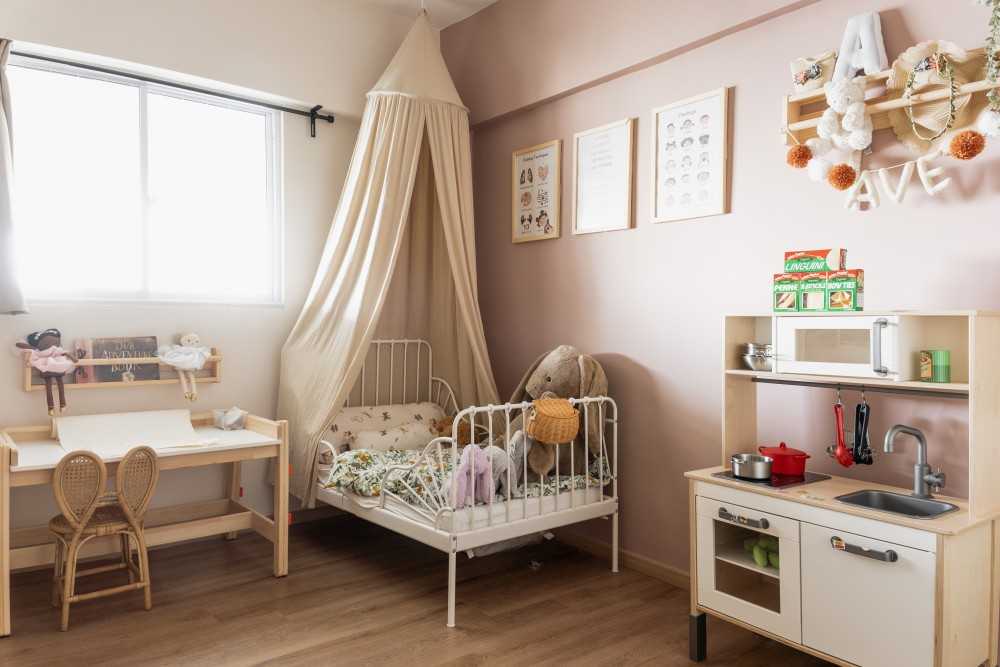

77 Telok Blangah ($38,500) by MET Interior
Another option is to use organic storage solutions like wicker baskets, woven storage cubes, or wooden crates. These can be used to store plastic toys or brightly coloured items in a way that still aligns with the overall aesthetic, helping maintain a sense of balance and harmony in the space.
Finding the Right Balance with Colour
When it comes to colour, it’s important to find a balance that supports both the Wabi-Sabi aesthetic and your child’s developmental needs.
While Wabi-Sabi leans towards muted, earthy tones, it’s important to consider the needs of children, who often thrive in environments that stimulate their creativity. Bright and vibrant colours can enhance their focus and imagination, so there’s no need to avoid them altogether.
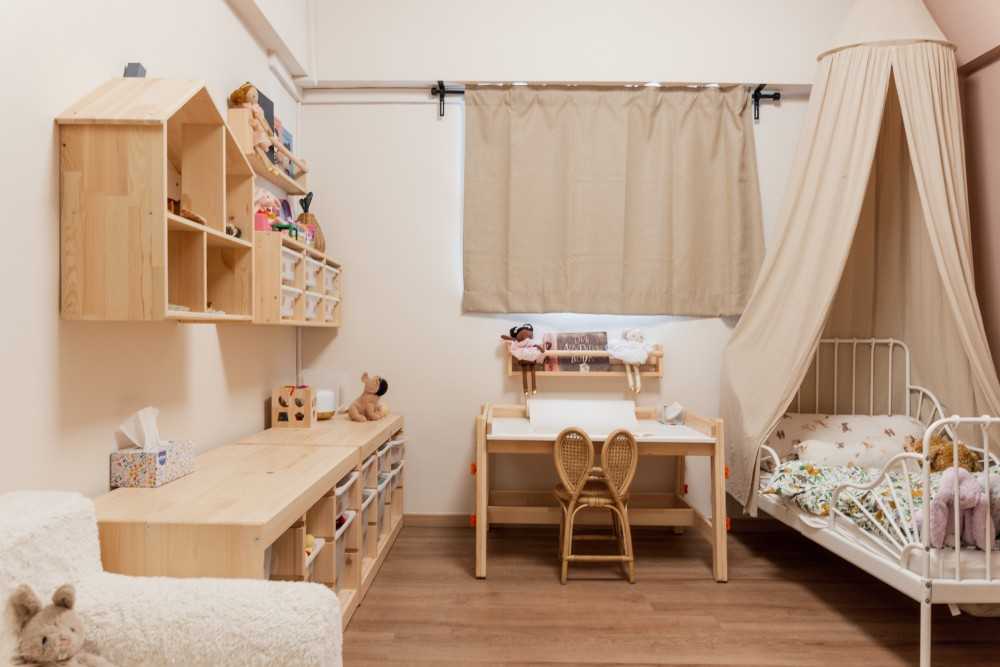

77 Telok Blangah ($38,500) by MET Interior
Instead of overwhelming the space with bold hues, you can bring them in through smaller, purposeful touches—like colourful toys, cheerful artwork, or playful cushions. This way, you maintain the calm, grounding feel of Wabi-Sabi, while also allowing the room to feel lively and
inspiring for your children.
Embracing Imperfection in Kids’ Spaces
Incorporating imperfection in your kids’ space could mean embracing the mess and wear that naturally comes with a child-friendly environment. Allow for a little scuffing on wooden furniture, or let their handprints and scribbles add character to a wall or surface.
Wabi-Sabi isn’t about avoiding wear and tear—it’s about accepting and even celebrating it as part of the story your home is telling. With kids, the key is to create a balance where the materials and overall design feel authentic and true to the Wabi-Sabi ethos while still meeting the functional needs of your family.
Embracing True Imperfection in Wabi-Sabi
We’ve talked at length about how Wabi-Sabi is all about embracing flaws and imperfections. But how do you differentiate between the kind of imperfection that adds beauty and character, and the kind that simply results in mess or neglect? Understanding this distinction is key to creating a space that truly reflects the Wabi-Sabi ethos.
Wabi-Sabi celebrates imperfections that come naturally with age and use, adding depth and authenticity. For instance, a wooden table with visible grain patterns, slight scratches, and wear from years of family gatherings becomes more beautiful over time. These signs of wear aren’t flaws—they tell a story and speak to the table’s history, infusing it with meaning and charm.
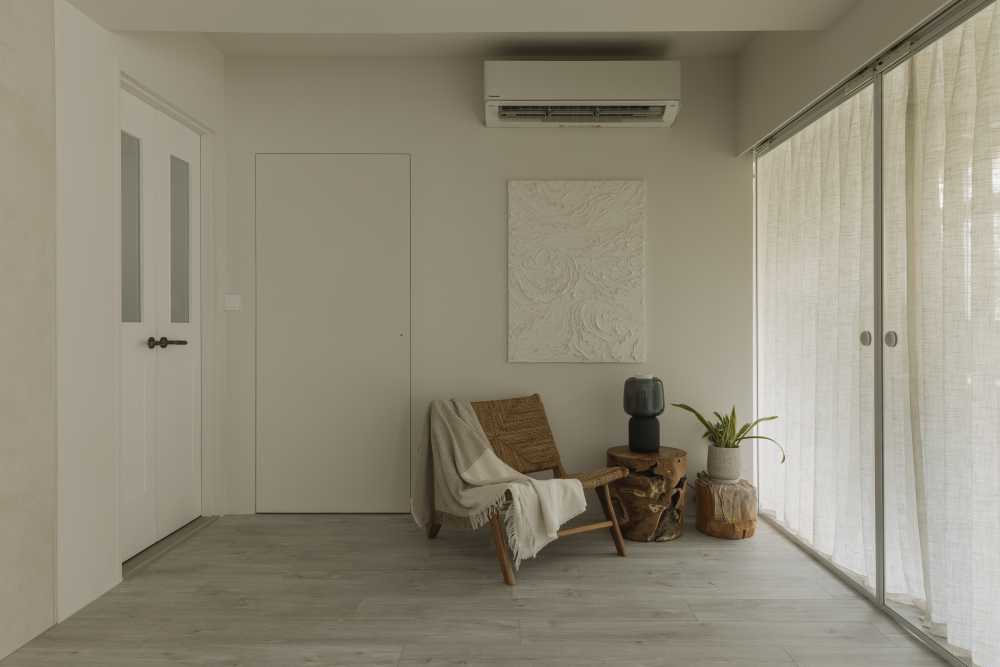

9 Joo Seng Road ($90,000) by The Interior Lab Pte Ltd
But there’s a fine line between these intentional, natural imperfections and those that come from neglect or carelessness.
Take, for example, a ceramic bowl with a tiny chip or a slightly off-center design. This kind of imperfection speaks to the artistry behind the piece, making it unique. However, a bowl that’s cracked beyond repair or left stained and unclean isn’t a reflection of Wabi-Sabi’s beauty. It’s simply a sign of neglect, not a meaningful flaw.
Wabi-Sabi teaches us to appreciate the marks of time, like the weathered patina on a copper pot or the faded paint on an old chair. These imperfections carry stories and depth.
On the other hand, a room cluttered with disorganized, dirty items isn’t a reflection of this aesthetic—it’s just chaos. Wabi-Sabi isn’t about tolerating mess; it’s about respecting the beauty in life’s gentle wear and tear, while still maintaining a sense of order and care in your space.
In short, the imperfections Wabi-Sabi embraces are those that reflect the passage of time and a life well-lived. They’re purposeful, meaningful, and beautiful in their own way.
But when care and maintenance are neglected, the true spirit of Wabi-Sabi is lost, leaving behind mere disarray. It’s important to strike the right balance—allowing natural imperfections to add character to your space, without letting the chaos of everyday life take over.
A Final Word On Renovating In the Wabi-Sabi Style
Wabi-Sabi offers a unique approach to home renovation, focusing on authenticity, simplicity, and connection to nature.
By embracing this philosophy, you can create a home that is not only beautiful but also deeply meaningful—a space that reflects the beauty of life’s imperfections and brings a sense of calm to your daily routine.
Remember, Wabi-Sabi is not about “styling” your home to look imperfectly perfect, nor is it about forcing a specific aesthetic onto your space.
Instead, the goal is to allow the natural character of materials, the marks of time, and the beauty of imperfection to shine through. By doing this, you’ll create a home that feels lived-in, personal, and deeply authentic.
Want to check out home renovation projects for more inspiration? Browse interior design ideas on Hometrust, or click the button below to get connected with expert designers!
Renovating soon? Let Hometrust recommend the best interior designers.
If you are reading this, you are probably wondering how you can create your dream home.
Here’s the thing, everyone’s needs and requirements for their home renovation is different. A designer that may work for someone else, may not quite work for you.
At Hometrust, we’re here to help match top rated designers, recommended by past homeowners to you through our data-driven and matching algorithm.
Whether you are looking for partial renovation or a full fledge overhaul, we’ll be able to recommend you top designers to match your renovation requirements and lifestyle.
Recommendations and free and you can simply start by helping us understand your needs below!
Get RecommendationsRenovate safe!
The Hometrust Team


